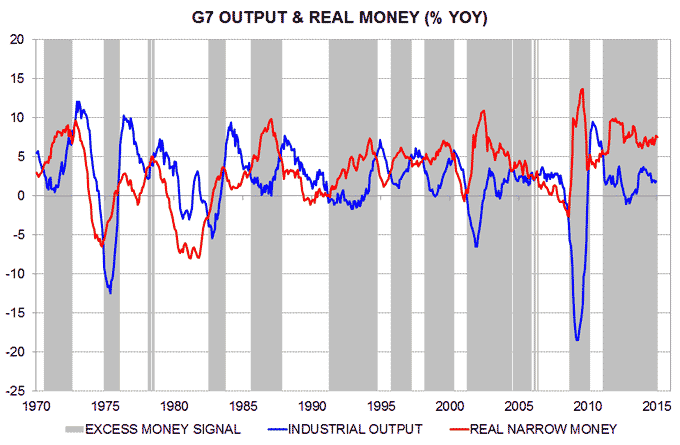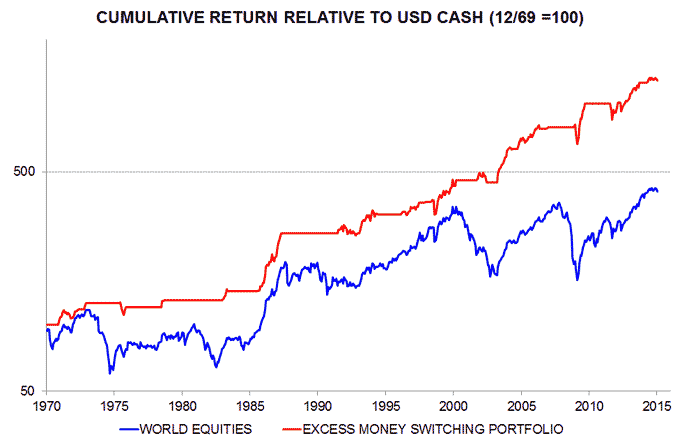Entries from February 22, 2015 - February 28, 2015
Eurozone money growth surging before QE
Strong Eurozone January monetary statistics support the optimistic view here of economic prospects while casting doubt on the wisdom of next month’s launch of sovereign QE.
Narrow money M1 surged by 1.7% last month, with the broader M3 measure up by a solid 0.7%. Six-month growth rates rose to 5.8% for M1 and 2.6% for M3 (11.8% and 5.3% annualised) – the fastest since November 2009 and December 2008 respectively.
Real growth was further boosted by a larger six-month decline in consumer prices, mainly reflecting lower energy costs – see first chart.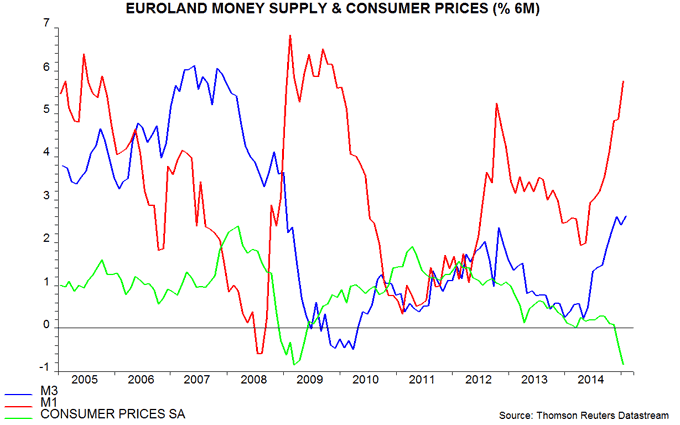
Six-month real M1 growth rose to 6.7%, or 13.7%, a level matched or exceeded in only two years since 1980 – 1999 and 2009. Industrial output and GDP subsequently rose strongly in both cases – second chart.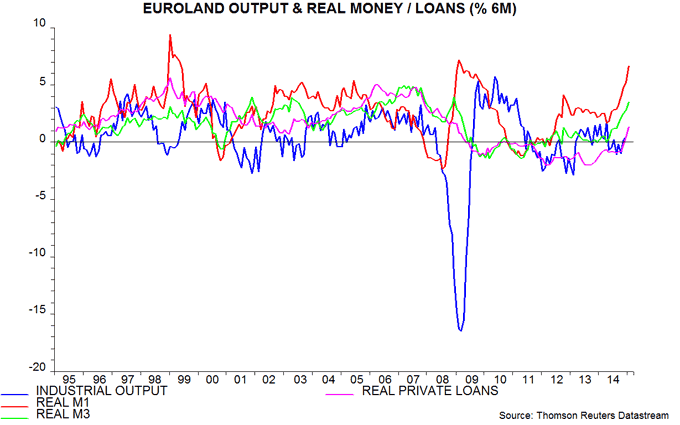
As well as signalling an economic pick-up, the current wide gap between real money and output growth suggests unusually favourable liquidity conditions for markets. Sovereign QE threatens to throw fuel on the flames, leading to destabilising asset price bubbles / busts.
M1, and to a lesser extent M3, have been boosted by the ECB’s rate cuts, which have reduced the opportunity cost of holding money. This does not reduce the significance of monetary strength for economic prospects. Faster money growth confirms that economic agents are responding to lower rates and are likely to increase spending on goods and services and investment in financial markets.
The country breakdown of overnight deposits, which dominate M1, shows strength across the big four economies. Six-month growth of real deposits surged in Italy and France last month and remains buoyant in Spain, with Germany lagging but solid – third chart.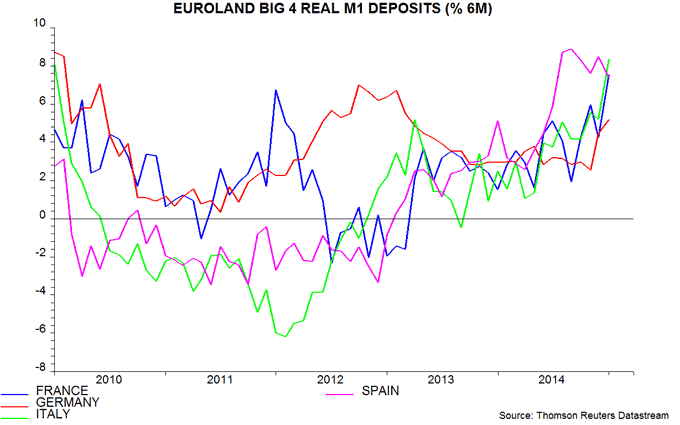
In other news today, German unemployment on an internationally-standardised definition fell to a new post-reunification low of 4.7% in January, far below current US / UK levels, while the job openings (vacancies) rate reached another record. Growing labour shortages should maintain upward pressure on wages – a regional branch of the IG Metall engineering union this week secured a 3.4% rise from 1 April despite weak consumer prices.
Liquidity backdrop for markets still favourable
The MSCI World index of developed equity markets this week reached a new record in US dollar terms. The local currency version of the index had surpassed its previous high in early February. The continued strength of equity markets is consistent with the assessment here of a favourable global liquidity backdrop.
According to the “monetarist” forecasting approach, real money – i.e. the money stock divided by prices, or M / P – leads the economy, while “excess” money – i.e. real money divided by output, or M / (P*Y) – leads financial markets. The latter idea suggests that equity markets will do well when real money is growing faster than output.
The first chart shows annual growth rates of G7 industrial output and real narrow money since 1970. Shaded areas mark periods when real money was growing faster than output, i.e. excess money was rising. The monetarist approach implies that equities should have performed more strongly during these periods.
This was the case. From the start of 1970 to the end of 2014, the MSCI World US dollar index returned a cumulative 314% more than US dollar cash (i.e. three-month eurodollar deposits). Investing in equities only when G7 excess money gave a positive signal would have boosted the excess return to 913%. By implication, equities underperformed cash on average during non-shaded periods.
The second chart compares the cumulative return relative to cash of buying-and-holding equities and a switching portfolio based on G7 excess money*. The maximum relative return drawdown of the switching portfolio in the historical data is 18% versus 56% for equities.
The annual growth rates of G7 real narrow money and industrial output were 7.3% and 1.7% respectively in November, the gap having widened since end-2013. A correction in markets is possible at any time but the liquidity backdrop remains supportive.
*The switching rule incorporates lagged as well as current excess money.
